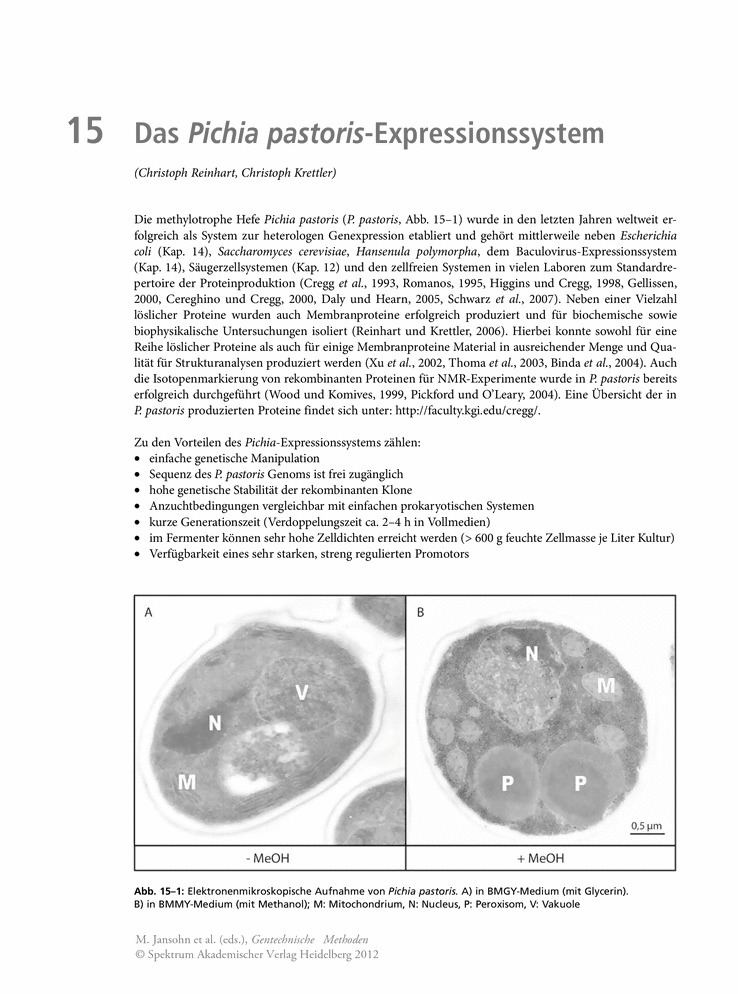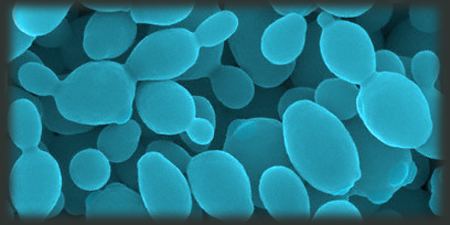Kingdom Fungi Genus Komagataella Phylum Ascomycota Rank Species | Family Saccharomycetaceae Scientific name Pichia pastoris Higher classification Pichia Order Saccharomycetales | |
 | ||
Similar Pichia, Brewer's yeast, Ogataea polymorpha, Eukaryote, Kluyveromyces lactis | ||
Producing recombinant protein using the yeast pichia pastoris
Pichia pastoris is a species of methylotrophic yeast. Pichia is widely used for protein production using recombinant DNA techniques. Hence it is used in biochemical and genetic research in academia and the biotechnical industry.
Contents
- Producing recombinant protein using the yeast pichia pastoris
- Humanized pichia pastoris thomas potgieter
- Pichia pastoris as an expression system
- Biotherapeutic production
- Comparison to other expression systems
- Pichia pastoris as a model organism
- References

Humanized pichia pastoris thomas potgieter
Pichia pastoris as an expression system

Pichia pastoris is frequently used as an expression system for the production of proteins. A number of properties makes P. pastoris suited for this task: P. pastoris has a high growth rate and is able to grow on a simple, inexpensive medium. P. pastoris can grow in either shake flasks or a fermenter, which makes it suitable for both small and large scale production.

Pichia pastoris has two alcohol oxidase genes, Aox1 and Aox2, which have a strongly inducible promoter. These genes allow Pichia to use methanol as a carbon and energy source. The AOX promoters are induced by methanol and are repressed by e.g. glucose. Usually the gene for the desired protein is introduced under the control of the AOX1 promoter, which means that protein production can be induced by the addition of methanol. In a popular expression vector, the desired protein is produced as a fusion product to the secretion signal of the α-mating factor from Saccharomyces cerevisiae (baker's yeast). This causes the protein to be secreted into the growth medium, which greatly facilitates subsequent protein purification. There are commercially available plasmids that have these features incorporated (such as the pPICZα vector).
Biotherapeutic production

Pichia pastoris was used for the production of over 500 biotherapeutics like interferon gamma.However, one drawback of this protein expression system is the over-glycosylation with high mannose structure which potentially is the cause of immunogenicity.
Comparison to other expression systems
In standard molecular biology research, the bacterium Escherichia coli is the most frequently used organism for production of recombinant DNA and proteins. This is due to E. coli's fast growth rate, good protein production rate and undemanding growth conditions. Protein production in E. coli is usually faster than in Pichia pastoris for several reasons: Competent E. coli cells can be stored frozen, and thawed immediately before use, whereas Pichia cells have to be produced immediately before use. Expression yields in Pichia vary between different clones, and usually a large number of clones needs to be screened for protein production before a good producer is found. Optimal induction times of Pichia are usually on the order of days, whereas E. coli usually reaches optimal yields within hours of induction. The major advantage of Pichia over E. coli is that Pichia is capable of producing disulfide bonds and glycosylations in proteins. This means that in cases where disulfides are necessary, E. coli might produce a misfolded protein, that is usually inactive or insoluble.
The well-studied Saccharomyces cerevisiae (baker's yeast) is also used as an expression system with similar advantages over E. coli as Pichia. However Pichia has two main advantages over S. cerevisiae in laboratory and industrial settings:
Firstly, Pichia, as mentioned above, is a methylotroph, meaning it can grow with the simple alcohol methanol as its only source of energy — Pichia can easily be grown in cell suspension in reasonably strong methanol solutions that would kill most other micro-organisms, a system that is cheap to set up and maintain.
Secondly, Pichia can grow to very high cell densities, and under ideal conditions can multiply to the point where the cell suspension is practically a paste. As the protein yield from expression in a microbe is roughly equal to the product of the protein produced per cell and the number of cells, this makes Pichia of great use when trying to produce large quantities of protein without expensive equipment.
Compared to other expression systems such as S2-cells from Drosophila melanogaster or Chinese Hamster Ovary cells, Pichia usually gives much better yields. Cell lines from multicellular organisms usually require complex rich media, including amino acids, vitamins and growth factors. These media significantly increase the cost of producing recombinant proteins. Additionally, since Pichia can grow in media containing only one carbon source and one nitrogen source, it is suitable for isotopic labelling applications in e.g. protein NMR. However, a number of proteins require chaperonins for proper folding. Thus, Pichia is unable to produce a number of proteins for which the host lacks the appropriate chaperones. In 2006 a research group has managed to create a strain that produces Erythropoietin in its normal glycosylation form. This was achieved by exchanging the enzymes responsible for the fungal type glycosylation, with the mammalian homologs. Thus, the altered glycosylation pattern allowed the protein to be fully functional.
Pichia pastoris as a model organism
Another advantage of Pichia pastoris is its similarity to the well-studied Saccharomyces cerevisiae (also known as baker's yeast). As a model organism for biology, and having been used by man for various purposes throughout history, S. cerevisiae is well studied, to say the least. The two yeast species (Pichia, Saccharomyces) have similar growth conditions and tolerances, and thus the culturing of Pichia pastoris can be readily adopted by labs without specialist equipment.
The Pichia pastoris GS115 genome has been sequenced by the Flanders Institute for Biotechnology (VIB) and Ghent University (UGent) and published in Nature Biotechnology. The genome sequence and gene annotation can be browsed through the ORCAE system.
